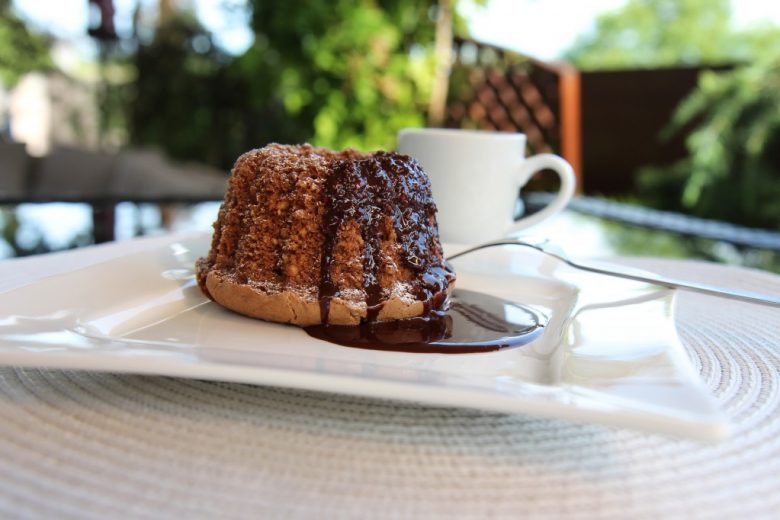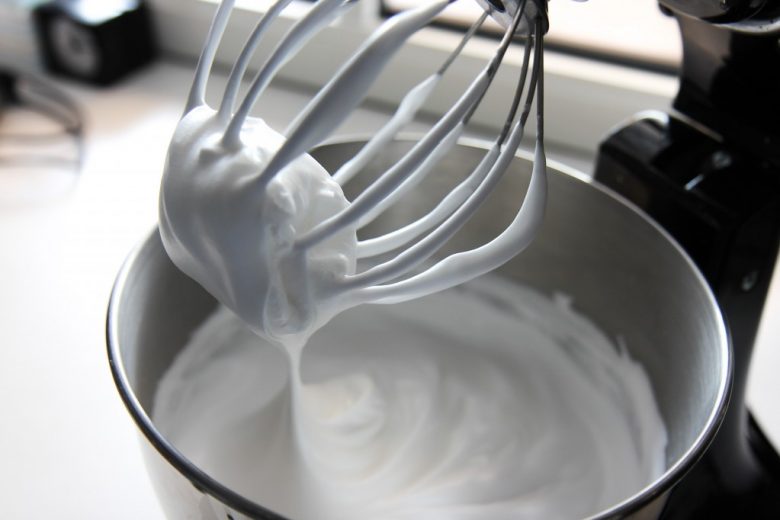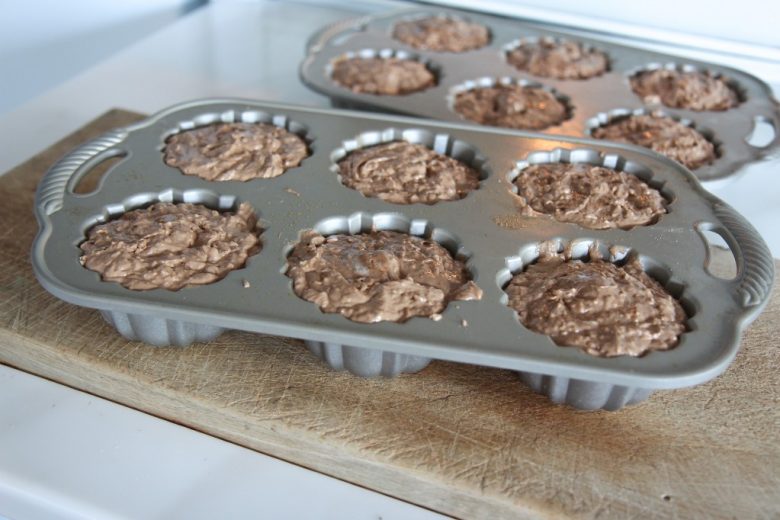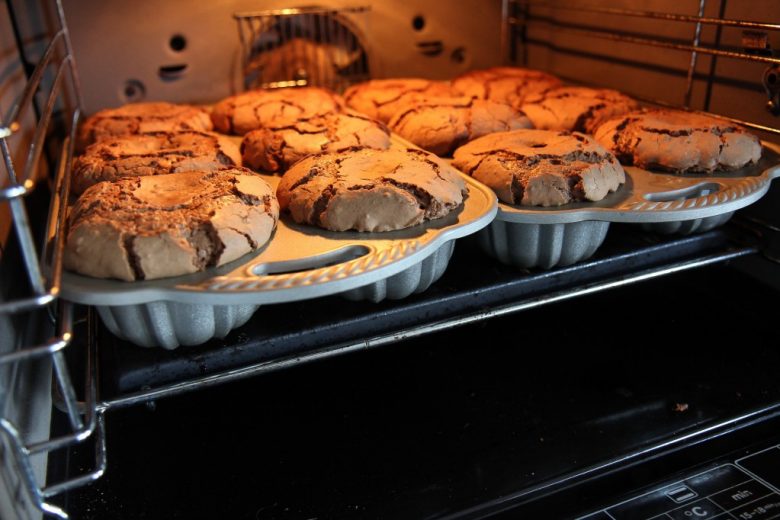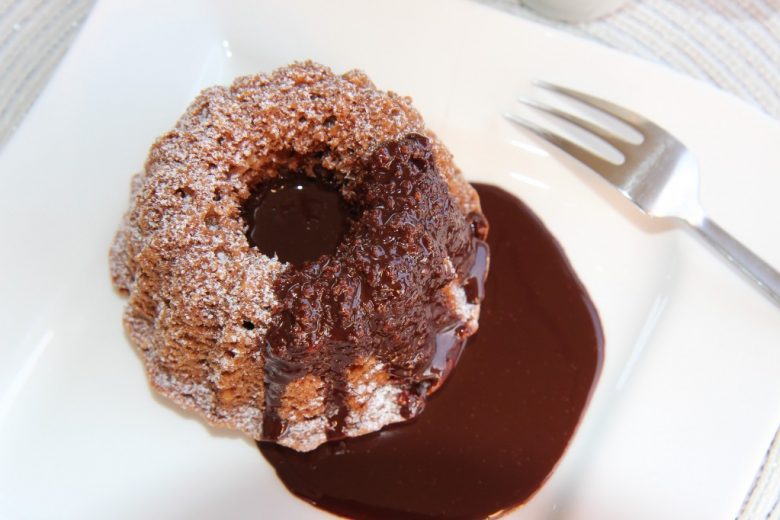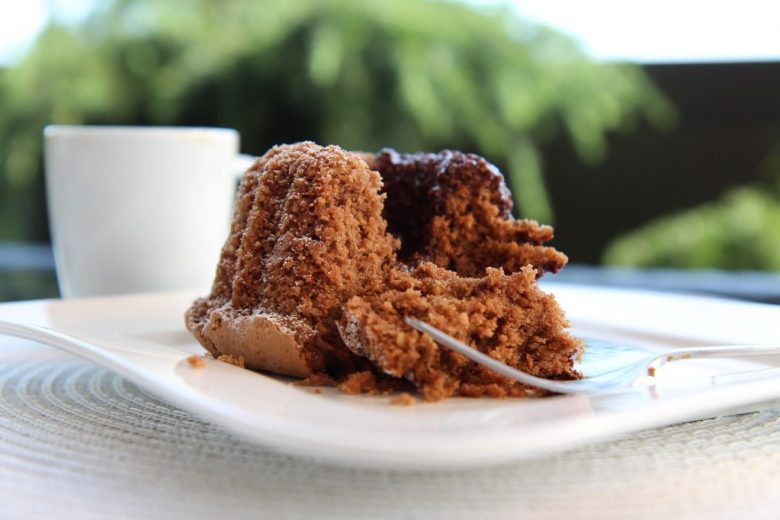Chocolate Cakes
The simplest chocolate cake batter consists of the following ingredients: butter, eggs, sugar, flour and couverture. In order to better incorporate these ingredients into the recipe, I have put some points together for you:
Flour:
Ideally, unbleached wheat flour type 480 or type 700 is used. Flour that is too strong (high protein) can partially be replaced with wheat or potato starch. Vanilla cream powder (for cooking) can also be used instead of starch, which has a positive effect on the aroma and color. Whole wheat flour can be exchanged for the wheat flour in a ratio of 1: 1. Due to the bran content, the batter browns more strongly towards the end of the baking time! Spelt flour can also be substituted in a ratio of 1: 1.
Butter:
Butter is easier to whip at room temperature (18-24 ° C). By whipping, the volume increases and the remaining ingredients are easier to incorporate.
Eggs:
- Adding more eggs results in a softer batter and the cake becomes airier.
- With an additional addition of yolk, the mass emulsifies better. A nicer color is achieved but with a lower volume.
- Egg white can/should be beaten to stiff peaks. This means that there is no need for baking powder. Egg white that is only beaten 3/4 of the way is easier to fold into the butter mixture.
In the case of cold batters, the egg yolk and egg white are separated and whipped with the appropriate amount of sugar. At the beginning, the egg white is mixed with the sugar and whipped into a smooth mass. If the egg white is 3/4 beaten, the volume remains a little less, but the stability when mixed with the second mass (butter mixture) is much better. For stable whipped egg whites, the proportion of sugar per 30g of white should be 20-25g. Add the remaining amount of sugar to the egg yolk or butter mixture.
Sugar:
The sugar plays an important role in the mixing, baking process, storage and flavor. Granulated sugar can be replaced by icing sugar or raw sugar in a ratio of 1:1.
Fruits and Nuts:
Additions that do not absorb much moisture such as: raisins, chopped almonds, candied fruits (aranzini, lemon peel, orange peel, …), hazelnuts or chocolate chips have no effect on the consistency and can therefore just be folded in. Dried or candied fruits are often soaked in spirits. They give off moisture and aroma to the baked goods. The solid additions should not exceed 20-30% of the total amount (exception: English tea cakes).
Finely Ground Nuts and Almonds:
The absorb moisture. Therefore the flour proportion is reduced by 3:1. Example: 300g finely chopped hazelnuts = 100g less flour
Couverture or Cocoa:
Couverture is melted (30°C) and then folded into the butter mixture after it has been whipped. Cocoa powder is exchanged 1:1 with the flour. To ensure that it is evenly distributed among in the batter, it must first be sieved with the flour.
Cookie Crumbs:
Mix the cookie crumbs with milk until the consistency matches that of the batter. Then add without any changes to the recipe.
Milk, Cream, Yogurt, Fruit Juice
If liquids are added, the mass becomes thinner. This must be taken into account in the recipe structure – the proportion of flour must be increased. For 100g of liquid = 100g of flour more. If you add a lot of liquid, the amount of flour is increased. Therefore, the amount of sugar in the recipe has to be adjusted. The sugar weight should be at least 2/3 of the flour weight
Raising Agent:
Heavy batter cannot be leavened by the whipped egg whites alone. Therefore, baking powder should be added as a raising agent: 20-30g per kg of flour. Light batters with stiff egg whites folded in do not require any additional raising agent. Baking powder must be baked immediately (activated by moisture !!).
Other Additions:
These additions can help round out the flavor:
- Orange or Lemon zest: 1-2% of the total amount
- Vanilla sugar: 1-2% of the total amount
- Salt: 0,25 – 0,5% of the total amount
Recipe
For 12 small chocolate cakes or 2 large Gugelhupf
- 240g Butter
- 120g Powdered sugar
- 200g Yolks (10)
Mix the butter and powdered sugar until creamy and then stir in the yolks one at a time.
- 240g Couverture/ dark chocolate
Then stir in the melted couverture (30°C) to the butter mixture.
- 300g Egg whites
- 280g Granulated sugar
Whip the egg whites and sugar to firm peaks and then fold into the creamed butter mixture.
- 120g Wheat flour Type 700 or 480
- 75g Hazelnuts toasted and coarsely chopped
- 75g Hazelnuts toasted and finely ground
Mix together the flour and hazelnut and then fold into the butter mixture.
The chocolate cakes are baked at 200°C c.15-17 minutes.


